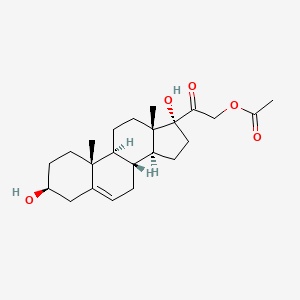|
Name: oxymetholone (17-alpha-methyl-2-hydroxymethylene-17-beta-hydroxy-5-alpha-androstan-3-one)
Type: Androgenic steroid
AKA: Anadrol-50, Adroyd, Anapolon, Anasteron, Pardroyd

|
|
II. Natural Derivative
Synthetic substance, no natural derivative
 |
|
III. Chemical Profile (IUPAC name)

|
|
IV. History
Oxymetholone, a synthetic anabolic steroid, was first developed in the 1960s. It was designed to promote muscle growth and enhance athletic performance. The compound gained popularity among bodybuilders and athletes for its potent effects. However, its use has been associated with significant health risks, leading to regulatory controls to prevent abuse.

|
|
V. Legal Information
Oxymetholone, an anabolic steroid, is illegal for non-medical use in the US and classified under the Anabolic Steroid Control Act. It is similarly banned in many countries due to its potential for abuse in sports and bodybuilding. Regulatory bodies enforce strict measures to control the distribution and use of anabolic steroids to prevent health risks and doping.
US Federal Schedule - III
Schedule III drugs, substances, or chemicals are defined as drugs with a moderate to low potential for physical and psychological dependence. Schedule III drugs abuse potential is less than Schedule I and Schedule II drugs but more than Schedule IV. Some examples of Schedule III drugs are: products containing less than 90 milligrams of codeine per dosage unit (Tylenol with codeine), ketamine, anabolic steroids, testosterone.
Key US Federal Policies:
Controlled Substances Act. Public Law: Public Law 91-513 (text can be found on GovInfo) (https://www.dea.gov/drug-information/csa). Date enacted: October 27, 1970.
|
|
VI. Physical Effects
Oxymetholone is an anabolic steroid used to enhance muscle growth and strength. It causes hormonal imbalances and potential liver damage, acting as an upper. Short-term use may improve muscle mass, but long-term use poses significant health risks including cardiovascular problems and liver damage. Overdose risks include severe hormonal disturbances and liver toxicity. Safe use involves medical supervision and adherence to recommended doses. Recent research focuses on its muscle-enhancing effects and potential health risks.  |
|
VII. Psychological Effects
Oxymetholone, an anabolic steroid, impacts mood and aggression through androgen receptors. Immediate effects include mood enhancement and increased aggression, with long-term use potentially leading to psychological issues and cognitive impairments. Research explores its effects on mental health and safety.
 |
|
VIII. Culture
Oxymetholone is an anabolic steroid used for muscle growth and performance enhancement. It gained prominence in the 20th century and is associated with bodybuilding. Cultural discussions focus on its benefits for muscle building versus health risks and ethical concerns. Proponents highlight its effectiveness, while opponents warn of side effects and impact on sports integrity.
 |
